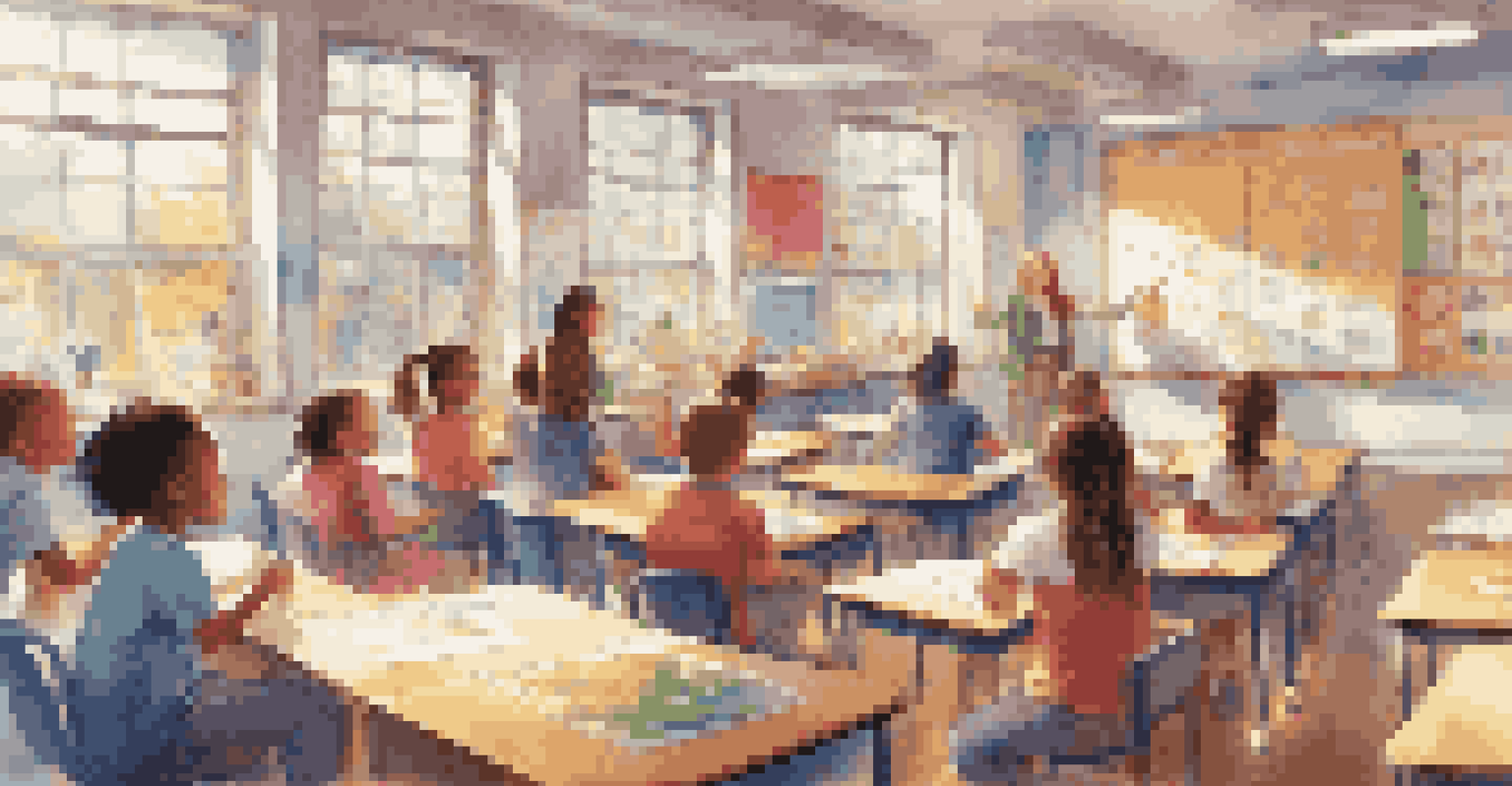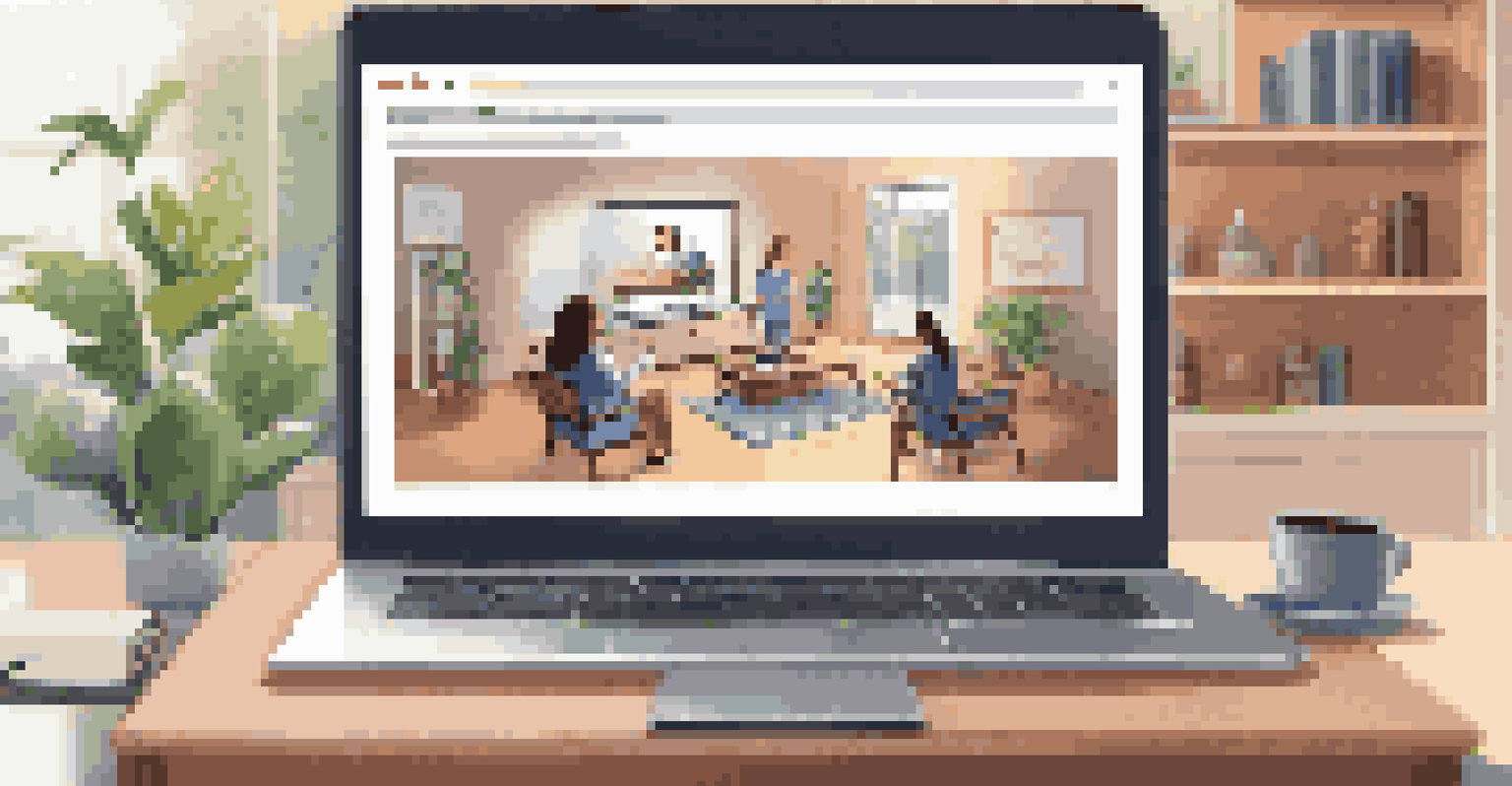Analyzing Learner Outcomes: Real-Time vs. Flexible Learning

Understanding Real-Time Learning and Its Benefits
Real-time learning refers to educational experiences that occur live, where learners engage with instructors and peers simultaneously. This model fosters immediate feedback, allowing students to ask questions and clarify doubts on the spot. Think of it like attending a live concert where the energy is palpable, and you can react in real time to the performance.
The great aim of education is not knowledge but action.
One notable benefit of real-time learning is the sense of community it cultivates among learners. When students interact in real-time, they establish connections that can enhance motivation and accountability. This social aspect can mirror the camaraderie of a group study session, making the learning process more enjoyable and effective.
However, real-time learning isn’t without its challenges. Not all students can attend live sessions due to scheduling conflicts or time zone differences. This is where the concept of flexible learning comes into play, providing alternatives that accommodate diverse learning needs.
What is Flexible Learning and Its Advantages
Flexible learning allows students to choose when, where, and how they engage with educational materials. This model empowers learners to tailor their study habits to fit their personal schedules and commitments. Imagine being able to attend class in your pajamas while sipping on coffee—this freedom can significantly reduce stress.

One of the primary advantages of flexible learning is accessibility. Students from various backgrounds, including working professionals or parents, can benefit from the ability to learn at their own pace. This approach ensures that education is not a one-size-fits-all solution, accommodating individual learning styles and life circumstances.
Benefits of Real-Time Learning
Real-time learning fosters immediate feedback and builds a sense of community among learners.
Moreover, flexible learning often incorporates a range of multimedia resources, enhancing the overall educational experience. By using videos, interactive quizzes, and discussion forums, learners can engage with content in diverse ways that cater to their preferences.
Comparing Learner Engagement in Both Models
Engagement levels can differ significantly between real-time and flexible learning environments. In real-time settings, learners may feel more compelled to participate, knowing their peers and instructors are present. This dynamic can lead to lively discussions and enriched understanding, similar to a debate club where everyone is actively involved.
Learning is not the product of teaching. Learning is the product of the activity of learners.
On the other hand, flexible learning may lead to varying degrees of engagement. Some students thrive in a self-directed environment, while others may struggle without the structure of scheduled classes. It’s akin to a gym membership—some people need the accountability of a trainer while others prefer to work out solo at their own pace.
Ultimately, the engagement levels depend on individual preferences and learning styles. Understanding these differences is crucial for educators looking to design effective learning experiences that cater to a diverse student body.
Assessing Learner Outcomes in Real-Time Learning
In real-time learning, assessing learner outcomes often involves immediate feedback mechanisms. Instructors can gauge understanding through quizzes, polls, or open discussions that occur during the session. This instant assessment allows educators to adjust their teaching strategies on the fly, ensuring that students grasp the material before moving on.
Additionally, real-time learning facilitates collaborative projects and peer evaluations, which can enhance the learning experience. Students working together can learn from each other’s perspectives, leading to deeper insights and a well-rounded understanding of the subject matter. It’s like cooking in a team; each member brings unique ingredients that create a richer dish.
Advantages of Flexible Learning
Flexible learning empowers students to tailor their education to fit their personal schedules and learning styles.
However, it’s essential to remember that real-time assessments may not capture all aspects of a learner's understanding. Some students may excel in hands-on activities but struggle with verbal expressions, highlighting the need for diverse assessment methods.
Evaluating Learner Outcomes in Flexible Learning
Flexible learning environments often utilize a variety of assessment methods to evaluate learner outcomes. These can include online quizzes, reflective journals, and project-based assignments that allow students to demonstrate their knowledge in diverse ways. This flexibility caters to different learning styles, allowing students to shine in areas where they feel most comfortable.
Moreover, the asynchronous nature of flexible learning enables students to reflect on their learning more deeply. They can revisit materials and take their time to understand complex concepts, which often leads to improved retention. Think of it as savoring a good book—you can pause, reflect, and absorb the narrative at your own pace.
However, the challenge lies in ensuring accountability. Without regular check-ins, some students might procrastinate or disengage. It’s crucial for educators to implement strategies that keep learners motivated and on track, such as setting deadlines or creating peer accountability groups.
The Role of Technology in Learner Outcomes
Technology plays a pivotal role in both real-time and flexible learning environments. In real-time settings, platforms like Zoom or Microsoft Teams facilitate live interactions, bringing students and instructors together, no matter the distance. This technology not only enhances communication but also fosters a sense of presence among participants.
For flexible learning, technology provides access to a wealth of resources, including recorded lectures, online forums, and digital libraries. This abundance of information allows learners to explore topics more thoroughly and at their own convenience. Picture having a library at your fingertips, ready to assist you whenever curiosity strikes.
Balancing Learning Models
Combining real-time and flexible learning can enhance the educational experience by accommodating diverse student needs.
However, relying heavily on technology can also present challenges, such as technical issues or a lack of digital literacy. It’s important for educators to provide support and resources to ensure that all students can effectively engage with the tools available, creating an inclusive learning environment.
Finding the Right Balance Between Learning Models
Finding the right balance between real-time and flexible learning can lead to improved learner outcomes. Combining the immediacy of real-time sessions with the adaptability of flexible learning can create a comprehensive educational experience. It’s like having the best of both worlds, allowing students to benefit from interaction while still accommodating their personal schedules.
Educators can strategically integrate both models by offering a mix of live classes and recorded materials. This way, students can attend sessions when possible and review recordings later if they need to catch up. It’s akin to recording a favorite TV show; you can enjoy it at your convenience without missing the excitement.

Ultimately, the key is to be responsive to the needs of learners. Regular feedback from students can help educators fine-tune their approach, ensuring that both real-time and flexible elements are effectively contributing to positive learner outcomes.